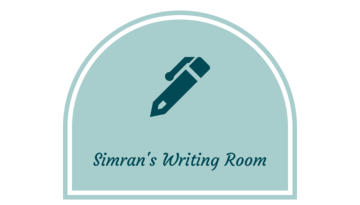If traditional AI systems were about predictions, Agentic AI is about decisions. This difference — between knowing and doing — will force a complete redesign of how we think about software. This is Part 1 of a two-part series. Part 1 explores the strategic vision and architectural principles. Part 2 will dive into implementation details,…
Understanding AI Coding Agents Through Aider’s Architecture
Understanding AI Coding Agents Through Aider’s Architecture How studying Aider’s context management reveals the core principles behind effective AI coding tools The promise of AI-powered coding assistance falls apart the moment you move beyond toy examples. Feed ChatGPT a single file from your Spring Boot application, and you’ll get suggestions that completely ignore your existing…
Understanding AI Coding Agents Through Aider’s Architecture
How studying Aider’s context management reveals the core principles behind effective AI coding tools The promise of AI-powered coding assistance falls apart the moment you move beyond toy examples. Feed ChatGPT a single file from your Spring Boot application, and you’ll get suggestions that completely ignore your existing security configuration, database layer, and architectural decisions….
MemGPT – Solving the Context Window Problem
MemGPT: Solving the Context Window Problem Large Language Models have fundamentally changed how we build intelligent systems, but anyone who’s used them knows the frustration: just when your application gets interesting, you hit the context window wall. Conversations get truncated, document analysis fails on enterprise-scale files, and users start complaining about systems that seem to…
Navigating Database Selection: Relational, Document, Wide-Column, and Beyond
With the growing number of available databases, it’s essential to revisit and reassess the choices we made just a few years ago. In this post, we’ll explore how different scenarios influence which database type is most appropriate. Database Selection Scenarios Scenario Database Type Why This Database Type Example Databases Transactional Systems (e.g., online banking, HR,…
Migrating Legacy Systems: Strangler Fig, Branch by Abstraction, and Parallel Run Explained
Migrating away from legacy monoliths can feel like navigating a labyrinth, but strategic patterns like Strangler Fig, Branch by Abstraction, and Parallel Run simplify the journey. Here’s a quick dive into how they work, when to use them, and how to decide when to switch completely to the new implementation. 1. Strangler Fig Applications What…
Using AI Agents to Create Self-Healing Clouds
Self-healing clouds are environments where operational issues are detected and resolved automatically, with minimal or zero human intervention. Modern cloud applications—often composed of microservices, containers, and serverless functions—generate enormous volumes of logs and telemetry data. This data reflects health, performance, and interactions across multiple services. AI-powered agents can continuously consume this data to spot anomalies,…
Token Bucket Algorithm for Message Fairness
𝐔𝐬𝐢𝐧𝐠 𝐓𝐨𝐤𝐞𝐧 𝐁𝐮𝐜𝐤𝐞𝐭 𝐀𝐥𝐠𝐨𝐫𝐢𝐭𝐡𝐦 𝐭𝐨 𝐒𝐨𝐥𝐯𝐞 𝐌𝐞𝐬𝐬𝐚𝐠𝐞 𝐒𝐭𝐚𝐫𝐯𝐚𝐭𝐢𝐨𝐧 𝐢𝐧 𝐌𝐮𝐥𝐭𝐢-𝐓𝐞𝐧𝐚𝐧𝐭 𝐒𝐲𝐬𝐭𝐞𝐦𝐬 In the world of multi-tenant cloud solutions, ensuring fair resource allocation can be challenging. One common issue is message starvation, where high-volume tenants monopolize processing resources, leaving others waiting. Here’s how this can be tackled using the Token Bucket algorithm: The Token Bucket Approach…
Operational Transformation algorithm for collaborative editing(e.g. Google Docs)
Ever wondered how tools like Google Docs allow multiple people to edit a document simultaneously, without chaos? The answer lies in Operational Transformation (OT), an algorithm designed to handle conflicts and ensure consistency in collaborative editing. What is OT? Operational Transformation is the backbone of real-time collaboration systems. It ensures that all users see a…
Key Indicators of Poorly Defined Microservice Boundaries
Designing a microservices architecture requires thoughtful consideration and careful planning. Incorrectly defining the boundaries between services can lead to significant complications, from development headaches to scaling nightmares. Recognizing the signs of poorly defined service boundaries early can save your team time, money, and frustration. Here are the critical indicators that suggest your microservices might be…
